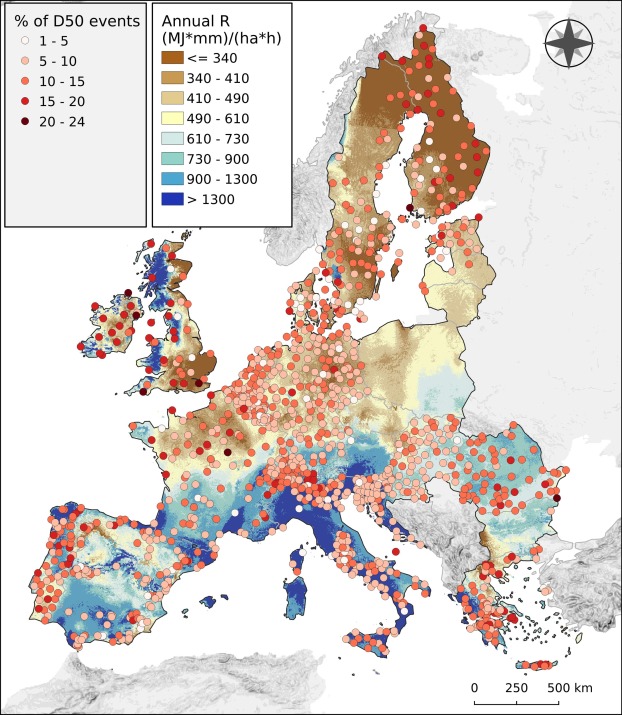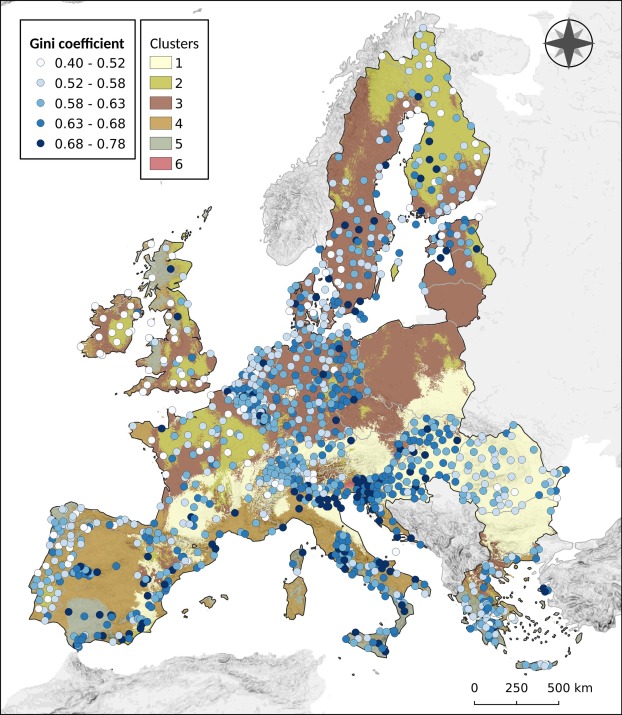Nejc Bezaka, Matjaž Mikoša, Pasquale Borrellibc, Leonidas Liakosd, Panos Panagosd. 2021. “An In-Depth Statistical Analysis of the Rainstorms Erosivity in Europe.” CATENA 206 (November): 105577. https://doi.org/10.1016/j.catena.2021.105577.
a .University of Ljubljana, Faculty of Civil and Geodetic Engineering, Slovenia b. Department of Earth and Environmental Sciences, University of Pavia, Italy c. Department of Biological Environment, Kangwon National University, Chuncheon 24341, Republic of Korea d. European Commission, Joint Research Centre (JRC), Ispra, Italy
Heavy rainstorms play a central role in the water-driving soil erosion processes. An in-depth knowledge about temporal and spatial erosivity of rainfall events is required to gain a better understanding of soil erosion processes and optimize soil protection measures efficiency. In this study, the spatiotemporal distribution of more than 300,000 erosive events measured at 1181 locations, part of the Rainfall Erosivity Database at European Scale (REDES) database, is studied to shed some new light on the rainfall erosivity in Europe. Rainfall erosive events are statistically investigated through the Lorenz curve and derived coefficients such as the Gini coefficient (G). Additionally, seasonal characteristics of the most and the less erosive events are compared to investigate seasonal characteristics of rainstorms across Europe. The G shows largest values of inequality of the inter-annual temporal distribution of the rainfall erosive events in the Alpine region, mostly due to the large number of rainfall events with smaller rainfall erosivity. While for other parts of Europe, the inequality described by the G is mostly due to a small number of high erosive events. The G slightly decreases from south to north while no clear regional patterns can be detected. Additionally, in Europe, on average 11% (ranging from 1 to 24%) of all erosive events contribute to form 50% of the total rainfall erosivity. Furthermore, higher erosive rainfall events tend to occur later in the year compared to less erosive events that take place earlier. To our knowledge, this study is the first one addressing event scale rainfall erosivity distribution using more than 300,000 rainfall erosivity events and covering almost a whole continent. Scientifically our findings represent a major step towards large-scale process-based erosion modelling while, practically, they provide new elements that can support national and local soil erosion monitoring programs.


Comments
comments powered by Disqus